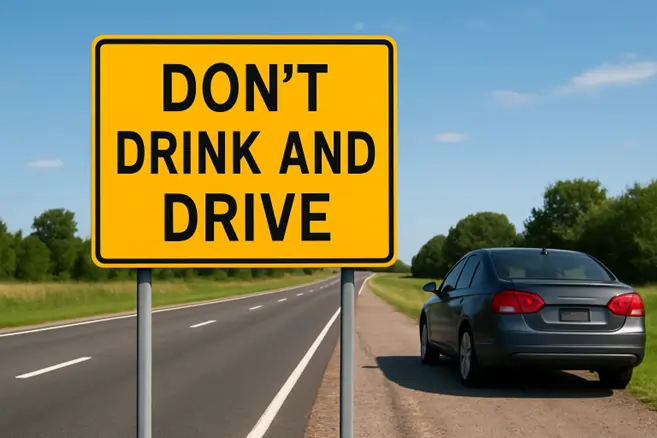How DUI Laws Shape Safe Driving Habits
The Impact of DUI Laws on Road Safety
Driving under the influence (DUI) is a persistent danger on American roads, remaining one of the top sources of traffic-related injuries and deaths. The implementation and strict enforcement of robust DUI laws have become a pivotal force in reducing alcohol-impaired crashes. In states where policies are more unforgiving—such as immediate license suspension, mandatory jail time, and vehicle forfeiture—statistics reveal a substantial drop in repeat offenses and alcohol-impaired fatalities. These effects demonstrate that clear consequences drive a culture of accountability and caution behind the wheel, especially when people understand the complexity and severity of penalties or are considering hiring a DUI attorney in Phoenix to navigate the legal system after a violation.
Recent years have seen some states enact even tougher penalties for repeat offenders and high blood alcohol content (BAC) cases. For example, legislative actions in 2025 in several regions not only increased jail sentences but also moved toward permanent license revocation and even vehicle seizure. These changes were made in response to data from the National Highway Traffic Safety Administration (NHTSA) linking aggressive enforcement with fewer alcohol-related traffic deaths and injuries.
Technological Innovations in DUI Prevention
Technology is playing an increasingly vital role in DUI prevention and enforcement. Ignition interlock devices (IIDs), which require drivers to pass a breathalyzer test before starting their engines, are now mandatory for many DUI offenders in most states. According to the Centers for Disease Control and Prevention (CDC), IIDs have been shown to reduce repeat offenses by roughly 70% among those convicted of DUI. Innovations like these, alongside advanced driver-assistance systems (ADAS) that feature lane-departure alerts and automatic emergency braking, add critical layers of safety not only for impaired drivers but also for everyone sharing the road.
As technology improves, there is hope that more vehicles—both private and commercial—will integrate passive monitoring and intervention systems, creating an environment where dangerous driving can be automatically addressed or reported.
Public Awareness and Education Campaigns
Public education campaigns are essential for changing social norms and individual attitudes toward drunk driving. High-visibility efforts, such as Florida’s “Never Drive Impaired” and the national “Drive Sober or Get Pulled Over,” combine media outreach with increased DUI checkpoints and patrols. These campaigns commonly coincide with major holidays and events where alcohol consumption surges. Their success is evident: following the launch of these campaigns and similar initiatives, studies have shown tangible decreases in both arrests and crash fatalities involving impaired drivers.
While laws and technologies are compelling deterrents, real progress takes place when communities internalize the consequences of impaired driving and actively promote responsible habits. Schools, parent-teacher associations, workplaces, and local governments frequently collaborate to facilitate workshops, presentations, and safety pledges, all of which support the overall prevention strategy on a grassroots level.
Legal Reforms and Their Effectiveness
The landscape of DUI legislation is constantly evolving in response to shifting trends and mounting public concern. In recent years, states like Florida have reconsidered their statutes to include harsher minimum fines, increased jail times, and even mandatory substance abuse counseling after an arrest. Lawmakers are also looking at lowering acceptable BAC limits and expanding eligibility for compulsory IID installation, intending to catch high-risk drivers before tragedy strikes.
Research from major national news outlets highlights that strong, clearly defined DUI policies not only result in immediate deterrence but also produce a sustained reduction in dangerous driving culture across communities.
Challenges in Enforcement and Compliance
While DUI laws and innovations deliver real benefits, enforcing these measures poses challenges. Some offenders attempt to bypass ignition interlock devices, and overreliance on automation can lead to driver complacency. Additionally, enforcement resources can be stretched thin, particularly in rural or underfunded communities, leaving gaps in both coverage and compliance. Public skepticism toward surveillance technologies or privacy concerns may also slow widespread adoption of lifesaving solutions.
Ongoing investment in officer training, improved data sharing among jurisdictions, and steady public education are necessary to close loopholes and reinforce legal compliance.
The Role of Community and Support Systems
Combating DUI goes well beyond courts and police. Recovery programs, substance abuse counseling, and peer-driven support networks help repeat offenders confront underlying issues contributing to risk-taking behaviors. Community organizations often host free ride services, organize “designated driver” initiatives, and work to destigmatize seeking help for alcohol misuse. These comprehensive approaches provide offenders with genuine opportunities for rehabilitation, while also enhancing the broader culture of safety for everyone.
Future Directions in DUI Prevention
Looking ahead, next-generation tools such as artificial intelligence (AI) and machine learning will shape proactive DUI prevention efforts. Researchers are developing algorithms to analyze driver habits, stress levels, and patterns of behavior, helping law enforcement focus efforts where they’re needed most. Continued investment in technology—alongside fairness-focused lawmaking—may help address long-standing disparities and create even more targeted, effective prevention strategies for the future.
Conclusion
Significant reductions in DUI-related fatalities are possible when strict laws, technological progress, public awareness, and robust community support combine in a coordinated approach. The ongoing evolution of both policy and prevention technology will be critical as we strive for safer roads and healthier communities for all.
Read more: Creative Strategies to Sell Your Home Fast – SizeCrafter
Crafting Digital-First E-Commerce Strategies in Finance and Healthcare – SizeCrafter

